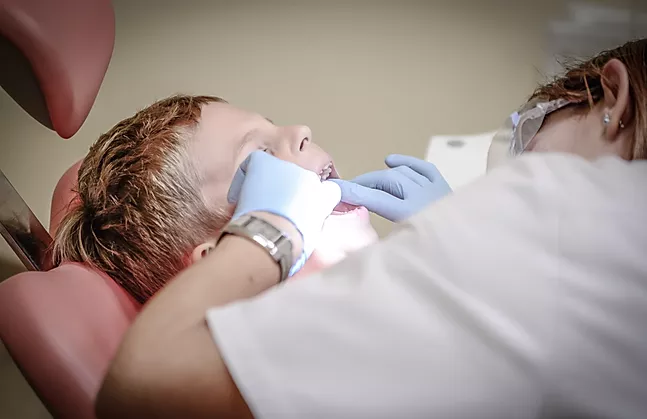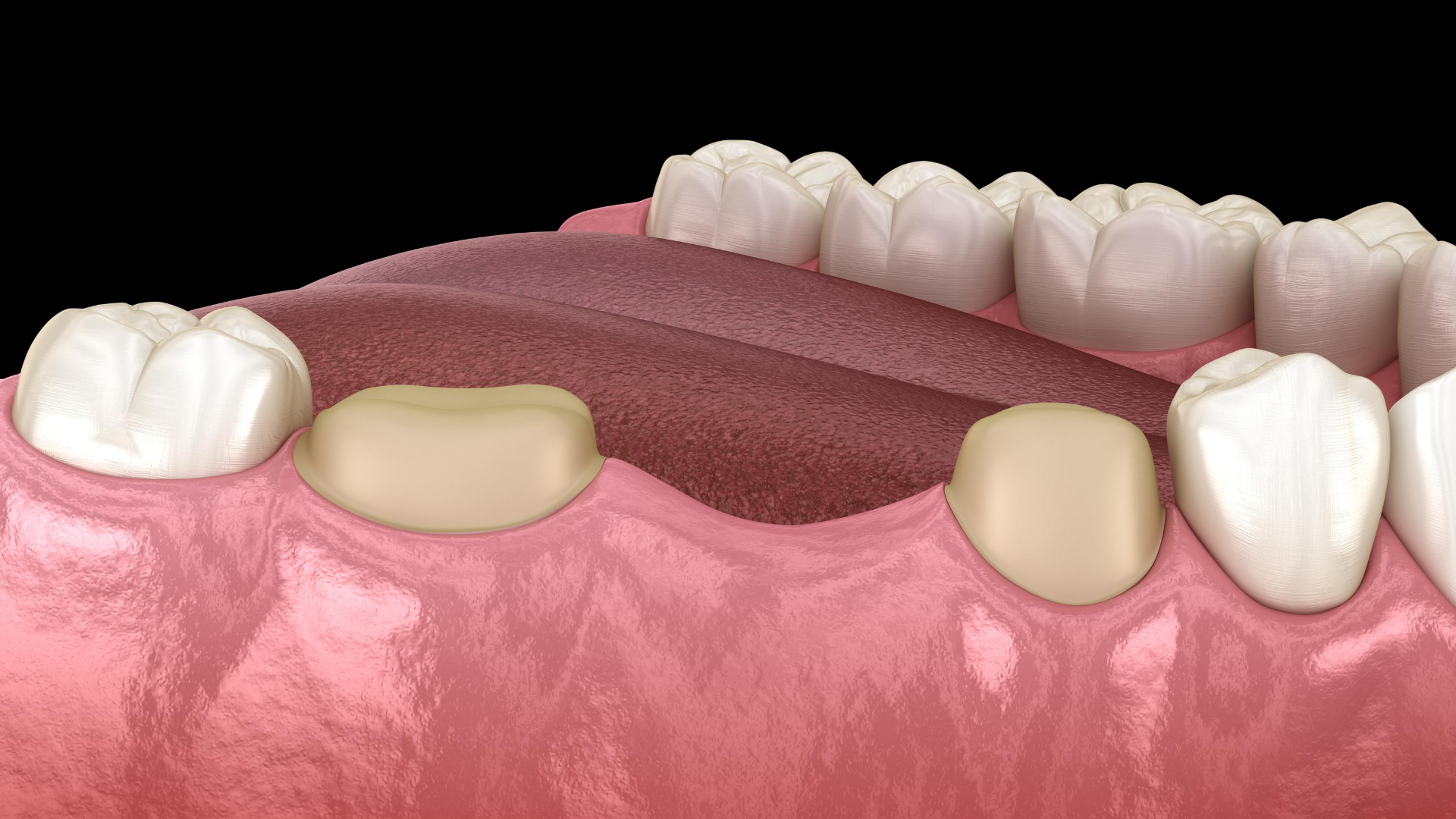

A dental bridge is a false tooth anchored between 2 crowned teeth. The false tooth, or pontic, is typically made from gold or porcelain and is constructed to subtly blend in with your smile.
Many patients lose teeth as they age. This can actually change the way your mouth looks and functions. It can also change the look of your face.
For this reason, Pearly Whites offers bridges to help fill in the gaps. Bridges with artificial teeth can get your mouth back to its correct shape and functioning as it should.
There are a lot of options when it comes to bridges. They can be made of different materials, including porcelain, gold, and alloys. You can also get removable or fixed bridges. You can take your removable bridges out yourself to clean them, while your dentist will have to remove fixed bridges. Fixed ones are implanted right to your jaw or under your gums.
It is always important to have a thorough examination with x-rays. After that, we will be able to discuss your options so we can make the right choice for your mouth.
What are the benefits of getting a dental bridge?
A missing tooth can wreak havoc on your mouth, from both a physical and aesthetic standpoint. Undergoing a dental bridge procedure can help:
- Improve your smile
- Restore your chewing ability
- Improve your speech
- Recalibrate your bite to relieve stress on the jaw
- Prevent neighboring teeth from tilting or shifting into the unoccupied space
- Improve unflattering facial features such as jaw pouches, which can form as your mouth adjusts to missing teeth

What goes into the fitting process of a dental bridge?
The first step in a dental bridge procedure is preparing the crowns, or abutment teeth. Your dentist will reshape the teeth, removing a portion of enamel, to provide a better foundation for the crown or metal framework. Next, impressions of the teeth are made to help form the pontic and crowns. Note that while you’re waiting for your dental bridge, you’ll be given a temporary bridge to help your mouth adjust. At your next session, you’ll be fitted for the actual device. The adjustment process may take several visits to ensure a proper fit but the bridge should be permanently cemented within 2 weeks.
What are the different bridge options available?
The installation process can differ based on your selected treatment. There are 4 dental bridge procedures available on the market today, including:
Traditional bridges
A traditional bridge consists of a false tooth held together by 2 abutment teeth and is the most popular dental bridge procedure on the market.
Cantilever bridges
In this method, the pontic is supported by 1 abutment tooth. This is beneficial for individuals who are missing multiple teeth, as the cantilever bridge only requires 1 adjacent tooth to function.
Maryland bridges
A Maryland bridge is held together by 2 abutment teeth but employs a different stabilizing mechanism. While traditional bridges use crowns, Maryland bridges are solidified with a metal or porcelain framework bonded onto the back of abutment teeth.
Implant supported bridges
Instead of using crowns or frameworks, these bridges rely on an implant for support. This is considered the strongest and most reliable dental bridge option and provides a more natural feel than other methods.
How do I care for a dental bridge?
Dental bridges typically last between 5-15 years but can achieve a longer lifespan with proper maintenance. Since most bridges rely on surrounding teeth for support, it’s important to practice excellent oral hygiene to ensure a solid foundation. Brush twice a day, floss, and use an antiseptic mouthwash to prevent complications that can result in tooth loss. Be sure to brush under your pontic as well; while this tooth may be false, the bacteria that resides underneath is not and can lead to issues if left unchecked. In addition, you must visit your dentist regularly to ensure your pontic, as well as abutment teeth, are responding well to treatment. Finally, consider eliminating sticky foods from your diet. Foods like gum and caramel can get stick to implants and pull them out of alignment. These foods are also high in sugar and can influence tooth decay, compromising the abutment teeth in your bridge.
Contact Us
-
Have a question? call us now
(908) 679-8551
-
Contact us by Email
DrGoel@ADSorthodontics.com
-
Hours of operation:
Monday : 8:00 AM - 5:00 PM
Tuesday : 10:00 AM - 7:00 PM
Wednesday: 8:00 AM - 5:00 PM
Thursday : 8:00 AM - 5:00 PM
Friday : 8:00 AM - 5:00 PM
Saturday : By Appointment
Sunday : Closed
